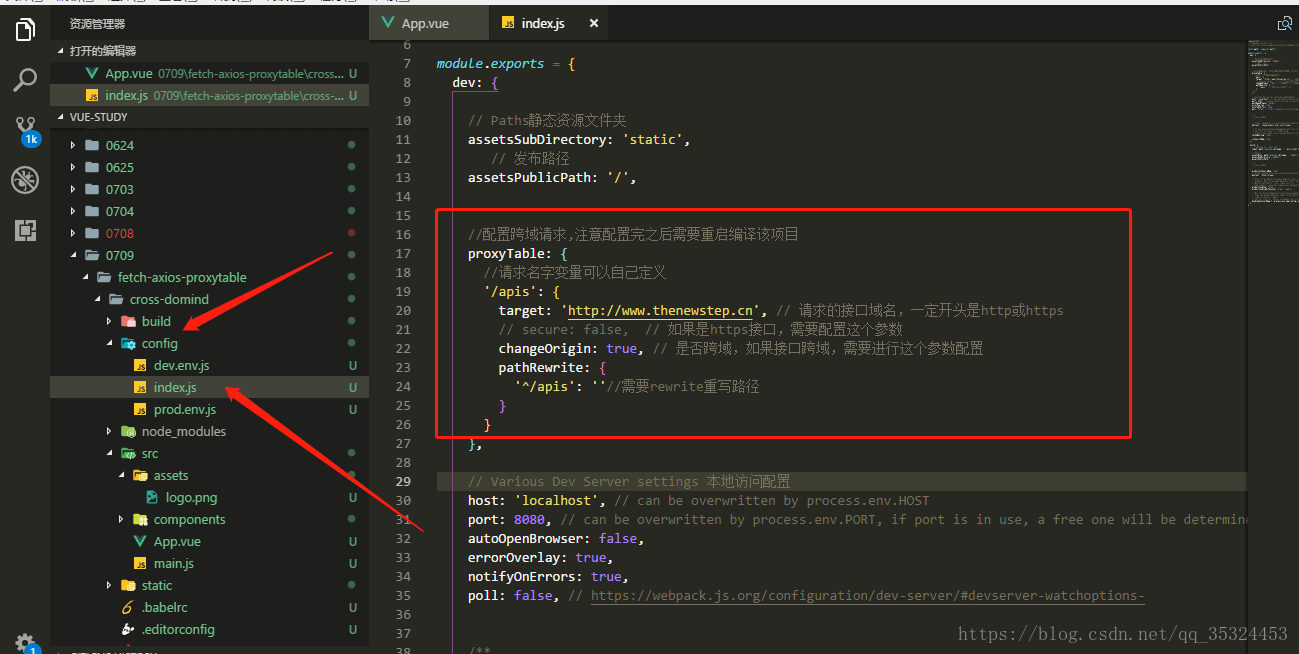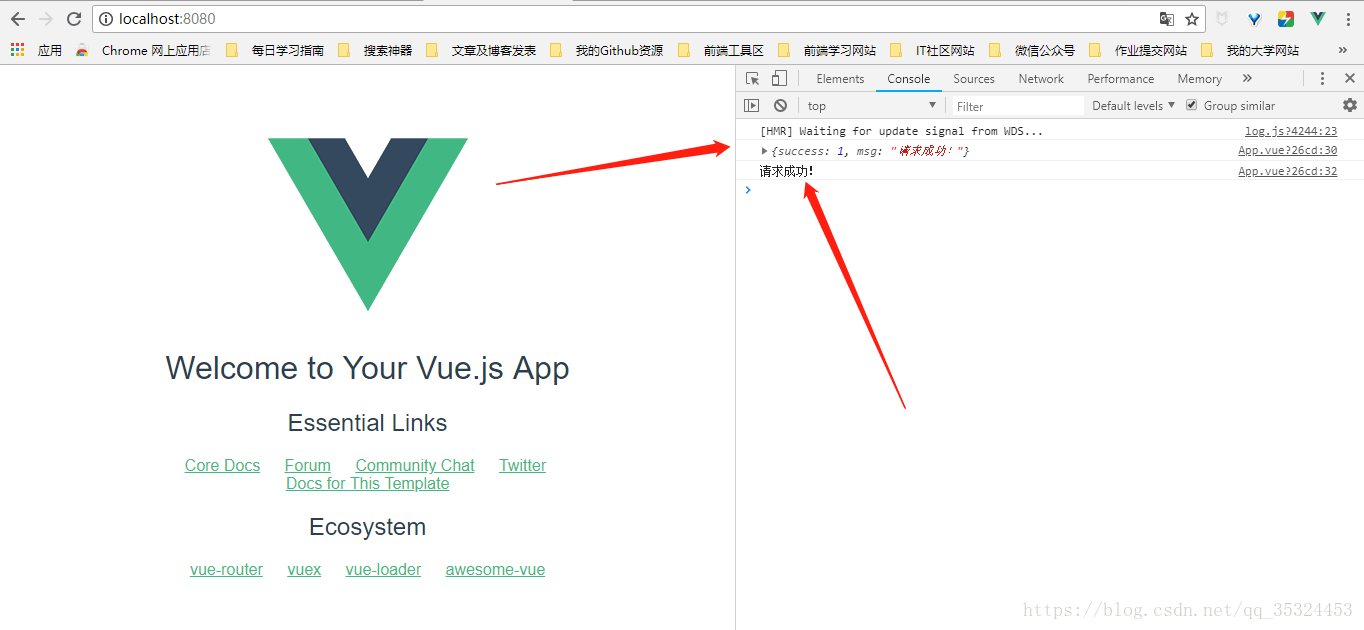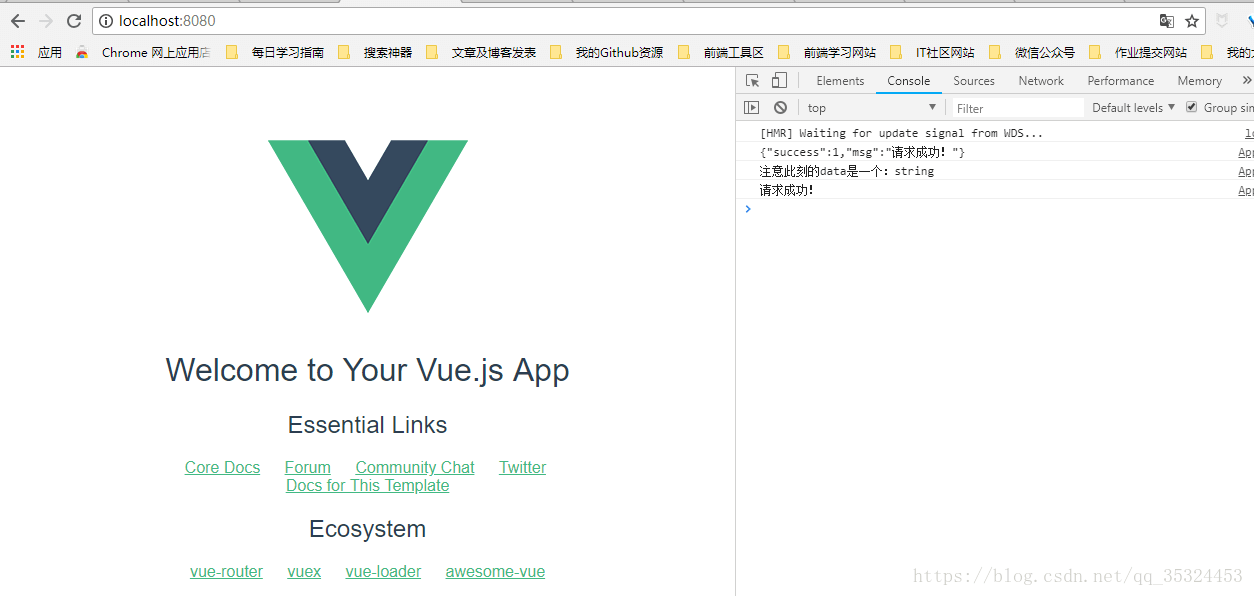Vue-CLI2 跨域请求 Demo(fetch、axios、proxyTable)
学习中需要应用到跨域请求的问题,找了资料,也自己写了一个简单的demo,应用到fetch方法或axios方法,前提都需要配置proxyTable,特别感谢:Web前端网站教程-米斯特吴老师提供的案例和请求接口。
(一)安装vue-cli2.x脚手架
如果还没安装的,或安装过程不熟的,可以参考这篇文章教程,写的很详细——Vue2.0史上最全入坑教程(上)—— 搭建Vue脚手架(vue-cli)
(二)配置proxyTable跨域请求
1.找到config文件夹下的index.js文件打开,找到proxyTable配置项:

2.配置代码参考如下:
//配置跨域请求,注意配置完之后需要重启编译该项目
proxyTable: {
//请求名字变量可以自己定义
'/apis': {
target: 'http://www.thenewstep.cn', // 请求的接口域名或IP地址,开头是http或https
// secure: false, // 如果是https接口,需要配置这个参数
changeOrigin: true, // 是否跨域,如果接口跨域,需要进行这个参数配置
pathRewrite: {
'^/apis': ''//表示需要rewrite重写路径
}
}
},**注意:**可能你的接口地址原本是 http://www.thenewstep.cn/test/test.html,但是为了匹配代理地址,需要在前面加一个 /apis(自己定义的请求接口变量名), 因此接口地址需要写成这样的即可生效 /apis/test/test.html。
(三)使用fetch实现跨域请求
1.在App.vue中添加以下代码即可:
<template>
<div id="app">
<img src="./assets/logo.png">
<HelloWorld/>
</div>
</template>
<script>
import HelloWorld from './components/HelloWorld'
export default {
name: 'App',
components: {
HelloWorld
},
created(){
// fetch方法,注意apis对应config/index.js中的proxyTable设置的请求名字变量
fetch("/apis/test/testToken.php",{
method:"post",//设置请求类型
headers:{
"Content-type":"application/json",
token:"f4c902c9ae5a2a9d8f84868ad064e706"//请求验证,根据请求方接口需要的
},
body:JSON.stringify({username:"test",password:"test"}),//设置发送请求的内容
}).then(result=>{
// console.log(result);
//使用json解析请求成功的body内容
return result.json();
}).then(data=>{
console.log(data);//查看打印出请求成功的内容
if(data.success==1){
console.log(data.msg);
}
});
}
}
</script>
<style>
#app {
font-family: 'Avenir', Helvetica, Arial, sans-serif;
-webkit-font-smoothing: antialiased;
-moz-osx-font-smoothing: grayscale;
text-align: center;
color: #2c3e50;
margin-top: 60px;
}
</style>2.运行结果

(四)使用axios方法跨域请求
1.安装axios:npm install axios; 2.在main.js文件引入axios模块并全局使用;
import Vue from 'vue'
import App from './App'
import axios from 'axios'//引入axios模块文件
Vue.config.productionTip = false;
Vue.prototype.$axios=axios;//设置全局引用
//配置请求的设置
axios.defaults.headers.post['Content-type']="application/json";
axios.defaults.headers.common['token']="f4c902c9ae5a2a9d8f84868ad064e706";//配置参数,请求验证,根据请求方接口需要的
/* eslint-disable no-new */
new Vue({
el: '#app',
render: h => h(App)
})3.修改App.vue组件代码为:
<template>
<div id="app">
<img src="./assets/logo.png">
<HelloWorld/>
</div>
</template>
<script>
import HelloWorld from './components/HelloWorld'
export default {
name: 'App',
components: {
HelloWorld
},
created() {
//axios方法
this.$axios.post("/apis/test/testToken.php", {
username: "test",
password: "test"
}).then(result => {
// return JSON.parse(JSON.stringify(result));
return JSON.stringify(result.data);
// console.log(data);
}).then(data => {
console.log(data);
console.log("注意此刻的data是一个:" + typeof data);
data = JSON.parse(data);
if (data.success == 1) {
console.log(data.msg);
}
});
}
}
</script>
<style>
#app {
font-family: 'Avenir', Helvetica, Arial, sans-serif;
-webkit-font-smoothing: antialiased;
-moz-osx-font-smoothing: grayscale;
text-align: center;
color: #2c3e50;
margin-top: 60px;
}
</style>4.运行结果:

